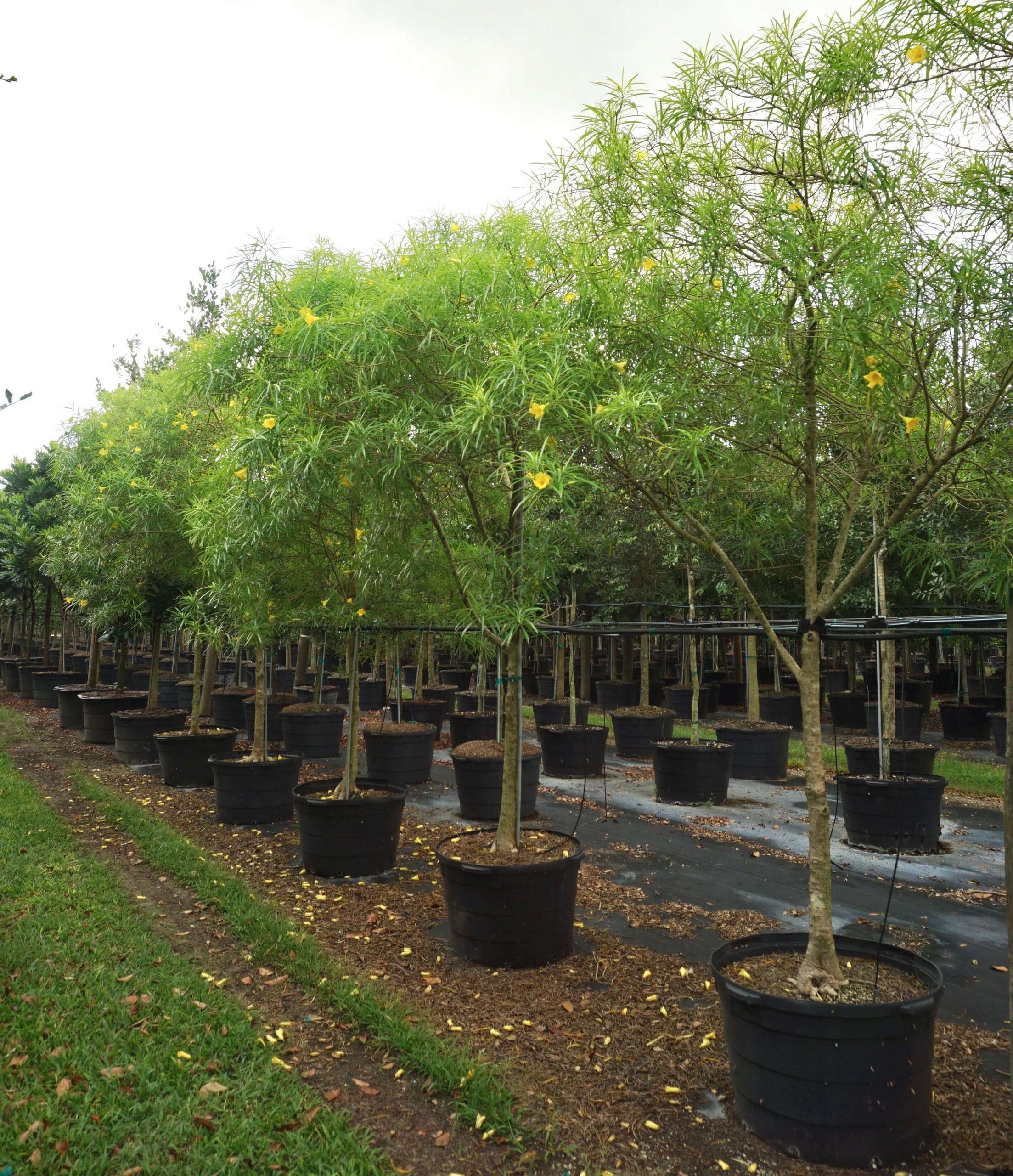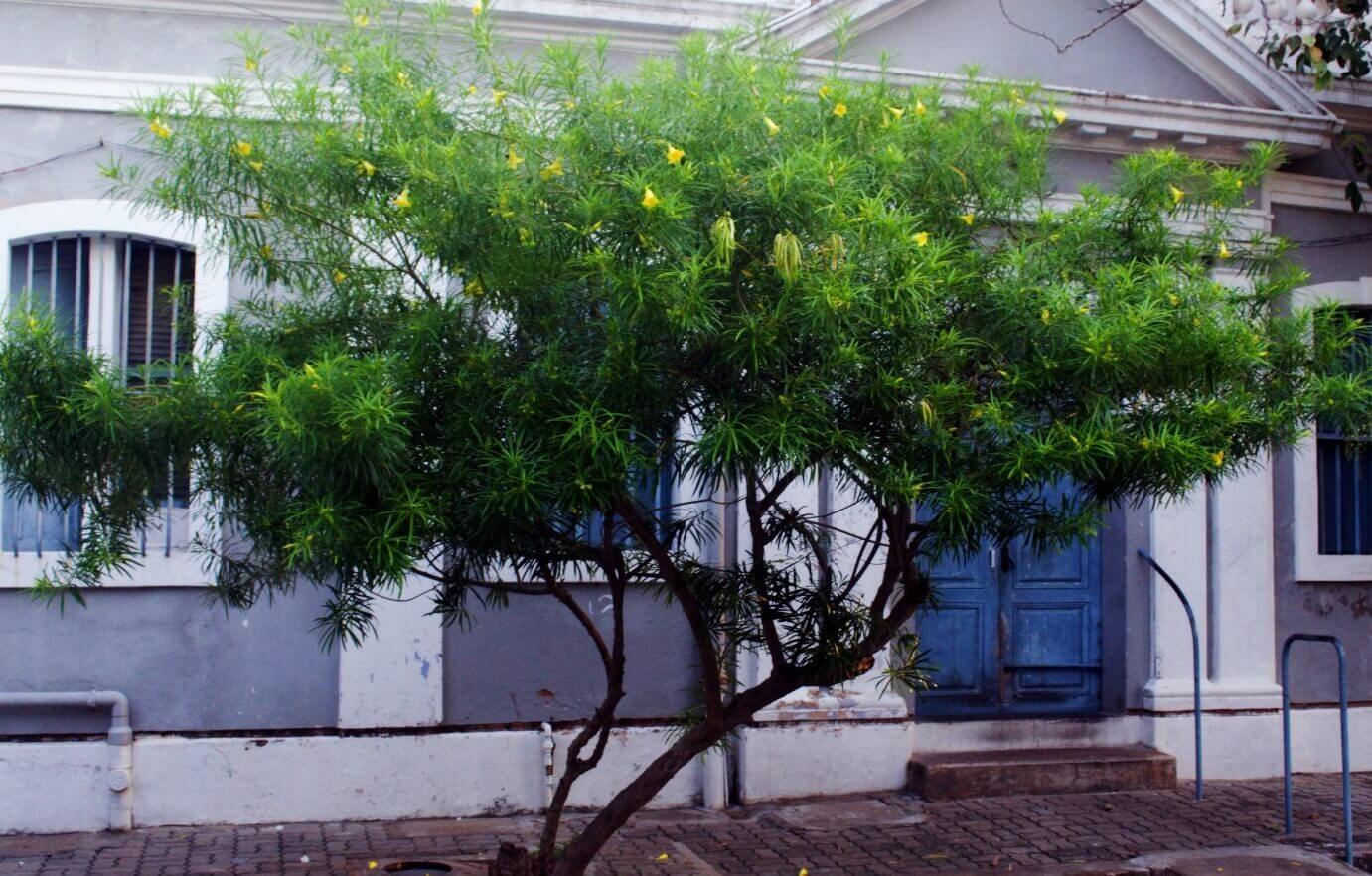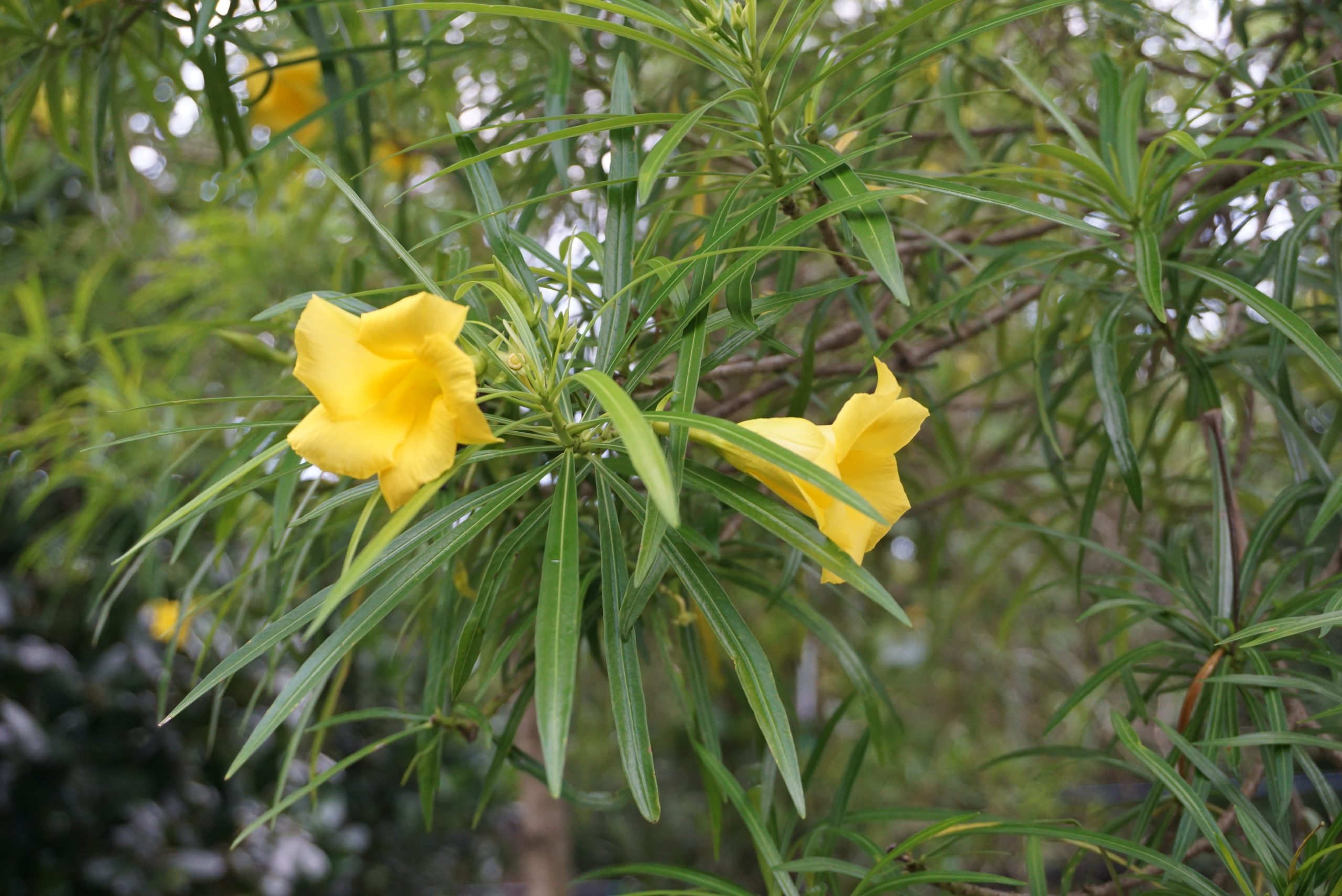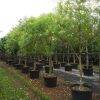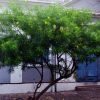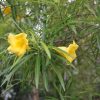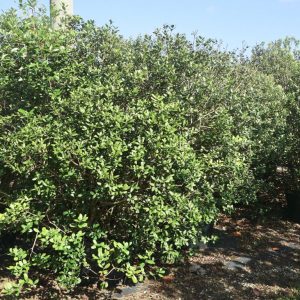Description
Thevetia Peruviana Tree Description
Thevetia peruviana (Lucky nut) is a small evergreen tropical tree or shrub. It has a greenish bark that becomes silver-gray with age. Also, the glossy leaves grow densely and are narrow, willow-like, waxy and 3 to 6 inches in length. Additionally, it bears terminal clusters of funnel-shaped yellow flowers. Moreover, the fruits are reddish black in color when ripe. Interestingly, the single large seed is said to be a good luck charm. In addition, the plant is easy to grow and tolerant of poor soils and unfavorable sites. Lucky nut can be started from seed
Furthermore, lucky nut tree is classified as a poisonous plant. All parts of the plant are toxic to most animals. Although, a few bird species are known to feed on the fruits without ill effects. Toxins in the. plant have reputed medicinal value, and it has been investigated as a species for biological pest control to repel insects. A mixture including seed oil can be applied to a plant as a repellant.
Thevetia Peruviana Landscape Usage
Thevetia peruviana (Lucky nut) can be used in landscaping in a number of ways. For example, to add color and leaf variety to a garden. Also, it can be used along roadways or grown in planters. However, precautions must be taken as to where it is grown to avoid the risk of human poisoning.
Other names: Be Still Tree, Cascabela thevetia



